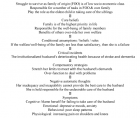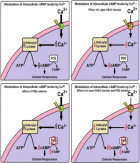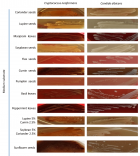About Ahmadu Bello University
Ahmadu Bello University
Articles by Ahmadu Bello University
Pathological Effects of Cypermethrin on the Testes and Accessory Sexual Glands of Yankasa Rams
Published on: 20th June, 2018
OCLC Number/Unique Identifier: 7795940088
An investigation into the pathological lesions of Cypermethrin on the testes, accessory sexual and pituitary glands of Yankasa rams was carried out. Sixteen Yankasa rams aged 18 - 30 months and weighing between 21.5 - 46.5kg were used. The 16 rams were divided equally into two groups (A and B) A served as the treatment group while B served as the control. Group (A) were given Cypermethrin (3%) at the dose rate of 3mg/kg (0.1ml/kg) body weight, topically. Group (B) rams were given distilled water at the same dose rate and route. These treatments were repeated every two weeks for a period of 12 weeks. The rams were sacrificed at the end of 12 weeks and the following organs (testes, pituitary, vesicular and prostate glands), were collected and weighed, gross pathological lesions were observed and photographs were taken. The samples were kept for histopathology. Results showed that there were no gross pathological lesions found on the testes, pituitary, prostate glands and the seminal vesicles of both groups. The mean weight of the pituitary gland, the prostate glands and the seminal vesicles of the treated and control groups were statistically not significant (P>0.05). No histologic lesions were found on them. The mean testicular weights of the treated (143.81±7.71g) and the control (130.43±0.63g) were significantly different (P<0.05). There was a reduced number of spermatozoa in the lumen of the seminiferous tubules of the treated group. It was concluded that Cypermethrin reduced spermatozoa in the lumen of the seminiferous tubules.
Extraction of DNA from face mask recovered from a kidnapping scene
Published on: 7th January, 2022
OCLC Number/Unique Identifier: 9395237994
Deoxyribonucleic acid (DNA) extraction has considerably evolved since it was initially performed back in 1869. It is the first step required for many of the available downstream applications used in the field of molecular biology and forensic science. Blood samples is one of the main body fluid used to obtain DNA. This experiment used other body fluids such as saliva, sweat tears and mucus. There are many different protocols available to perform nucleic acid extraction on such samples. These methods vary from very basic manual protocols to more sophisticated methods included in automated DNA extraction protocols. This experiment used extraction kit (Zymo research). The DNA result from isolated saliva samples on the facemask range from 133.7, 213.6, 599.1 and 209.1 mg/ml. theoretically; such DNA is of much quantity and quality and can be used for forensic investigation when recovered from a crime scene. The DNA from isolated tears samples on the face mask ranges from 707.7, 202.5, 99.2, and 62.6 mg/ml. Theoretically, such DNA is of much quantity and quality and can be used for forensic investigation when recovered from a crime scene. The DNA from isolated tears samples on the face mask ranges from 615.3, 66.2, 78.5, and 68.2 mg/ml. theoretically, such DNA is of much quantity and quality and can be used for forensic investigation when recovered from a crime scene. Extracted DNA from saliva and sweat produced visible bands on agarose gel, mucous stain produce obscure band on agarose gel and the tears stain produce invisible bands. DNA from sweat satin, saliva stain, mucus stain and tears stain in face mask can be used as alternative for forensic investigation.
An Appraisal of Recurrent Miscarriage in Sub-Saharan Africa: Occurrence and Possible Solution
Published on: 10th October, 2024
A recurrent miscarriage may be defined in the African context as the foetal demise of two or more successive pregnancies before the attainment of the age of viability. A literature review was done to assess the trend of recurrent miscarriage in sub-Saharan Africa. Identifying the main causes, considering the population at risk, and the availability of accurate diagnostic utilities to effectively ensure good management of recurrent miscarriage is an important gynaecologic issue. Over the years, studies have identified several etiologies and yet there’s been no tangible implementation of therapeutic strategies. Routine modifications should also be employed to develop new approaches to reproductive prognosis. There is notably scanty information on the cases of spontaneous abortion due to chromosomal abnormalities. Genetic and immunological factors should be considered in the work-up plan for women with RM. About 70% of the cases of RM are considered unexplained, and this may be due to limited resources. We concluded that there is relatively poor management of miscarriage and cases of missed and inaccurate diagnosis of the causes of spontaneous abortion in sub-Saharan Africa. More studies are needed in order to assess the extent of genetic induced miscarriage, where resources are limited, folic acid supplements should be provided for pregnant women.

If you are already a member of our network and need to keep track of any developments regarding a question you have already submitted, click "take me to my Query."




















































































































































